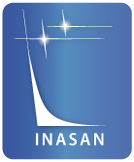 |

APSG 2015 International Symposium Held in Moscow
APSG 2015 International Symposium of Asia-Pacific Space Geodynamics (APSG) Program, was successfully held in Moscow, capital of the Russian Federation, 24-28 August, 2015.
Institute of Astronomy, Russian Academy of Sciences (RAS) is the chief organizer of APSG 2015. Other sponsors are: APSG Program Central Bureau, Geophysical Service of RAS, Shanghai Astronomical Observatory of Chinese Academy of Sciences, Institute of Geodesy & Geophysics of CAS, Institute of Applied Astronomy, of RAS. As many as 80 participants of experts, researchers and students from several countries and regions including Russia, China, America, Australia Uzbekistan, Taiwan and Hongkong, attended the symposium, communicating latest progress on Asia-Pacific Space Geodynamics.
Academician Nikolai Lavyorov, member of the Presidium of the Russian Academy of Sciences and Professor Boris Shustov, director of the Institute of Astronomy RAS made Greeting Speech and Welcome Address respectively at the opening ceremony.
The conference on Geodetic Datum and Regional and Terrestrial Reference Frame Realization, with altogether 46 oral and 8 posters presentations, covers such sessions as space geodesy techniques and progresses, terrestrial reference frame realization, Earth gravitational field and height datum, regional crustal structure movement, coseismic and postseismic crustal deformation, tsunami and volcanic activities.
Plans for APSG’s future are also discussed and six resolutions are made in the symposium, such as APSG Resolution on the Global Geodetic Observing System and Resolution on applying real time and augumentation system of GNSS to the Tsunami and large mega-thrust earthquakes early warning system, which will surely make contributions to leading APSG Project to a sounder and maturer future. Meanwhile, it can not only deepen our understanding of space geodesy, astro-geodynamics theories and techniques, and latest progress on monitoring the earth movement, but also expand our vision of the moon and planets exploration, which will enormously speed the development of astro-geodynamics research.

|
 |

